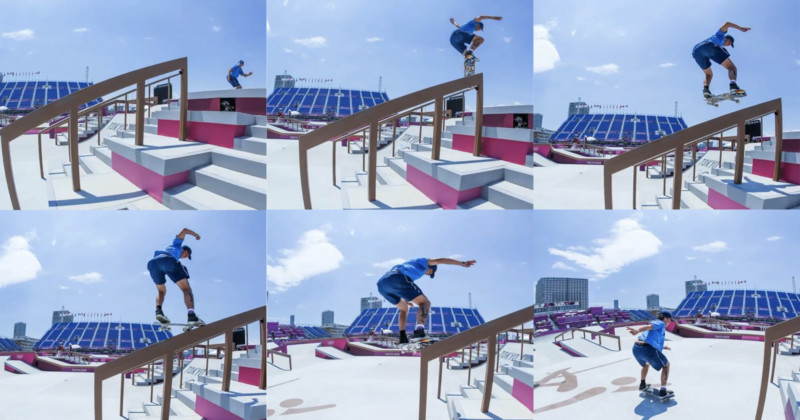
One of several photographers who are currently testing the unreleased Canon EOS R3 at the Tokyo Olympics has shared a burst from Canon’s forthcoming sports-focused camera that shows what its 30 frames per second capture looks like.
Atiba Jefferson is a photographer and skateboarder who has been taking part in the sport for over 20 years and has worked for several skate magazines like Slap, Thrasher, Juxtapoz, and Transworld. He was born in Colorado Springs and grew up skateboarding there before he moved to California in 1995. he now lives and works in Los Angeles, California. In addition to his skateboarding photography history, Jefferson has also worked as a staff photographer for the Los Angeles Lakers during the Shaq and Kobe years and shot more SLAM magazine covers than any other photographer.
Jefferson is also a Canon Explorer of Light and is currently in Tokyo for the 2020 Olympics, mainly covering the skateboarding competition while testing the EOS R3 and sharing the results on his Instagram.
One of his most recent posts is a “video” that shows a skateboarder grinding a rail. The clip was captured at what is presumed to be 30 frames per second, but it wasn’t actually a video clip originally: it was a burst from the R3’s high frame rate capture. This is one of the first — if not the first — look at how quickly the new camera can shoot still frames in its burst mode.
The promise of 30 frames per second matches the best Sony can offer on its flagship Alpha 1, though recent photos published by Jeff Cable — another photographer testing the R3 in Tokyo — show that the camera will have significantly less resolution at 24-megapixels. The lower resolution puts the R3 more as a competitor to Sony’s Alpha 9 Mark II, which also captures 24-megapixel photos. In that head-to-head, the Alpha 9 Mark II maxes out at 20 frames per second.
The mix of a higher frame rate but the lower resolution of the R3 puts it as a competitor somewhere between the Alpha 9 Mark II and the Alpha 1, which does make sense since Canon is expected to produce a higher resolution camera next year — it will probably be called the R1. For now, the R3 will likely appeal to professional sports photographers and photojournalists who will place more emphasis on high-speed capture and autofocus capabilities than resolution, as 24-megapixels have been pretty standard in those industries for several years.